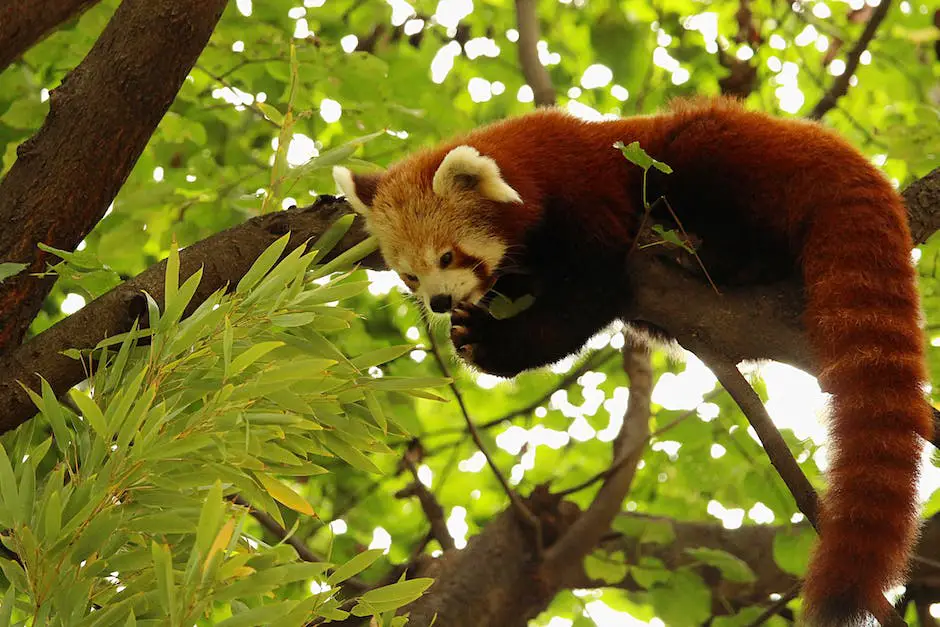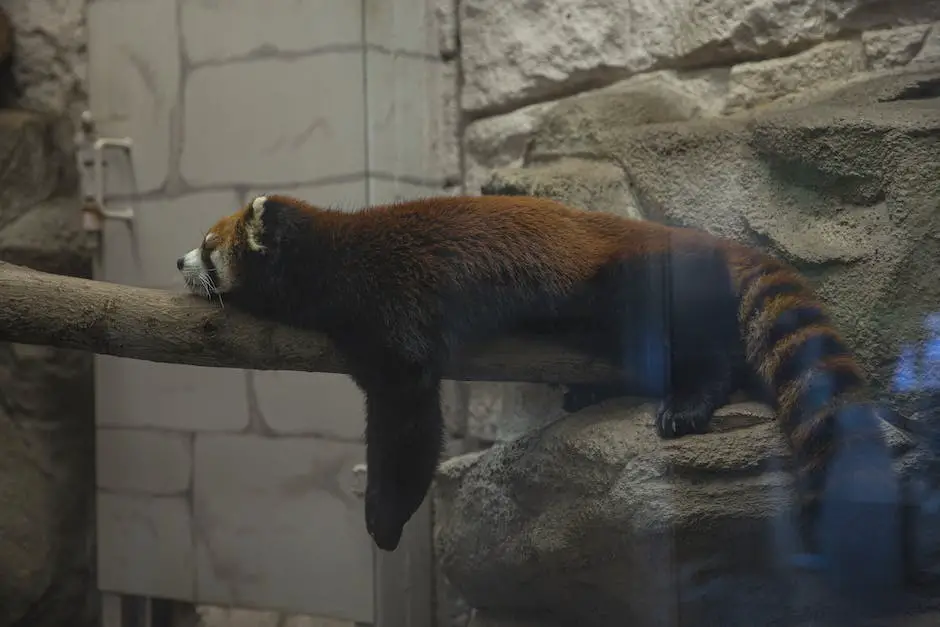In the beautiful tapestry of life, every creature has a vital role to play, but the survival of each comes under threat from various quarters. Unique and captivating, the red pandas are among these threatened species whose existence can rapidly become perilous due to the presence of certain predators including snow leopards, martens, and an unlikely adversary – humans. This exploration delves into the intricate dynamic between these gentle creatures and their predators, examining the impact of predation on population, genetics, and behavior, boosted by real-life examples and case studies.
Identification of Predators
Snow Leopards: Apex Predators in Himalayan Ecosystems
The elusive and gorgeous Snow Leopard is one of the main natural predators of the Red Panda. Dwelling in the same habitat of the lofty Himalayan regions, the Snow Leopard is an apex predator that stands at the top of the food chain. Red Pandas occasionally fall prey to these long-tailed felines. Snow Leopards, renowned for their incredible stealth and camouflage abilities, can ambush and successfully catch unsuspecting Red Pandas.
Martens: Small but Deadly Foes
Though not as formidable as Snow Leopards, Martens are another significant predator to the Red Pandas. Martens are small carnivores from the weasel family. They are agile, tree-climbing mammals that can access Red Pandas in the trees, even as they sleep. Moreover, they are flexible enough to chase and capture these elusive and agile prey. Yellow-throated Martens, in particular, are known for their aggressive and predatory behavior towards Red Pandas.
Human Predation: The Man-Made Threat
From habitat destruction to illegal wildlife trade, human predation is arguably the most detrimental to Red Pandas. These small mammals are hunted for their beautiful and valuable fur, particularly in China, where their pelt is often used to make hats and clothing. Similarly, pet trade is another prevalent human-induced threat. Although having a Red Panda as a pet is illegal without a special permit, the demand is high in some parts of the world, leading to illegal and harmful practices.
Other Potential Threats
Although not as common predator as the Snow Leopard, Martens, or humans, eagles have been reported to pose a threat to Red Panda cubs. Multiple instances of predation by large raptorial birds have been recorded.
Mitigating Predatory Threats
Efforts to safeguard Red Pandas from these threats are ongoing. Conservation organizations are working to combat illegal wildlife trade and habitat destruction. Encouraging local communities to actively conserve Red Pandas and their habitats against human incursion and exploitation is also a key strategy. Snapshot surveys and fauna-flora assessments help identify and monitor threats from animal predators. Predation can’t be eliminated since it’s part of a natural ecosystem, but it can be managed to ensure the survival of Red Pandas.
Human-Wildlife Interactions and Coexistence
Comprehending and efficiently managing the relations between humans and wildlife is vital for the continued existence of many species, including the beloved Red Panda. Spreading awareness about the dangers they face, enforcement of protection laws, and adequately maintaining their habitats amidst urban advancements and climatic fluctuations are imperative for their survival. The conservation efforts for Red Pandas should include strategies that tackle both the threats posed by their natural predators and the risks stemming from human activities.

Predation and its Impact
The Predators of the Red Panda
Although Red Pandas look innocent and are well-liked, they face serious threats from various predators like snow leopards, martens, wild dogs, and humans. Human-related threats particularly include habitat devastation and the unlawful pet trade. As mainly nocturnal and tree-dwelling creatures, red pandas spend the majority of their time off the ground in an attempt to evade predation. While perched in the trees, their distinct red-and-white coloration blends with the moss and leaves, serving as a functional camouflage.
Impact on Red Panda Population
The predation faced by red pandas places considerable pressure on their population numbers. Snow leopards and wild dogs, the primary non-human predators, are carnivorous species that depend on the red pandas for nutrition. Similarly, martens, although typically targeting smaller creatures, may also prey on these pandas on occasion, contributing to population decline. Coupled with the devastation caused by human activities, the panda’s population has been severely impacted, leading to their current classification as an endangered species.
Predation and Genetic Diversity
Predation can also impact the genetic diversity of the red panda population. When predation is high, the gene pool shrinks, which can lead to an increase in inbreeding and, subsequently, genetic diseases. Also, when certain members of the species with specific traits are targeted, they may no longer pass those traits onto future generations, resulting in a change in the genetic makeup of the entire population. The snow leopard’s preference for preying on juvenile and female pandas, for instance, has skewed the pandas’ sex ratio, altering their genetic landscape significantly.
Predation and Behavior Adaptations
The predation pressure that red pandas face has led to several behavioral adaptations. One of them is the adoption of a nocturnal lifestyle, which is characterized by more activity during twilight hours, when their predators are least active. They also use their retractable claws for defense and climbing trees, where they find refuge from many predators.
Case Studies and Examples
An excellent example of the impact of predation on the red panda population is the situation in the Singalila National Park in India. Park studies showed a sharp decline in red panda numbers, which was largely attributed to predation by free-ranging dogs. In Sikkim, in the Eastern Himalayas, the over-hunting of red pandas for its attractive fur in the early 20th Century resulted in a significant reduction in the creature’s population.
Recognizing the increasing threats to the survival of the red panda, it has become imperative that we understand the consequences of predation on these endangered species. Given the magnitude of danger this poses, addressing these issues remains key to ensuring the perpetuity of these fascinating creatures.

Human-induced Threats
Human-Caused Dangers to Red Pandas
Out of all the perils red pandas encounter, it’s people and their actions that arguably inflict the most harm. Our destructive activities such as deforestation and participation in the illegal wildlife trade directly and indirectly contribute to the predation risks that these creatures face. The outcomes of the human-influenced threats have proven disastrous for the survival of red pandas.
Deforestation – The Robbery of Red Panda Habitats
Deforestation emerges predominantly as a human-induced factor that extensively endangers the existence of red pandas. According to the World Wildlife Fund (WWF), a massive portion of about 50% of red panda habitats have been lost to deforestation in the Eastern Himalayas over the past 20 years, largely due to human activities including logging and conversion of forests into agriculture and grazing land.
These deforestation activities strip red pandas of their shelters, leaving them vulnerable in the face of potential predators. The loss of forested areas makes these animals more visible and accessible to predators like snow leopards and martens leading to increased predation rates. The elimination of trees, which red pandas use for escape and refuge, creates an unsustainable environment for these creatures and exposes them exponentially to predation dangers.
Illegal Wildlife Trade – A Direct Human Threat
Illegal wildlife trade presents another significant human-induced threat to red panda populations. Despite their status as a protected species under national laws in their range countries, and their categorization as ‘Endangered’ on the IUCN Red List of Threatened Species, red pandas are still subjected to illegal poaching for their distinct and attractive pelts.
This captures the animals directly into the hands of human predation. Red panda body parts, including their tails and paws, are also coveted items in the illegal wildlife trade that often land these animals in pet markets. Such capture and killing not only reduce red panda populations but also expose them to various forms of human predation.
Besides, the removal of individual red pandas for the illegal wildlife trade indirectly increases the risk of predation for those remaining in the wild. After the removal of certain pandas, remaining individuals may need to cover more significant ground in search of resources, exposing them to larger territories inhabited by potential predators.
While humans may not traditionally prey on red pandas, the hazards we impose are alarmingly detrimental. These threats, in the form of deforestation and illegal wildlife trade, compromise the red pandas’ defense mechanisms and expose them to greater vulnerability. It’s imperative to mitigate these human-induced threats to strengthen and preserve the red panda population.

Conservation Measures
The Imperative of Habitat Conservation: A Lifeline for Red Pandas
Safeguarding the habitat is fundamental to shielding red pandas from their natural predators. These distinctive species predominantly reside in temperate forests within regions such as the Eastern Himalayas and Southwestern China. Alarmingly though, the encroachment of human activities such as illegal logging, agricultural expansion, and livestock grazing poses a grave threat to these creature’s habitats. Recognizing this, numerous conservation organizations like the Red Panda Network and the World Wildlife Fund (WWF) have spearheaded efforts to salvage and safeguard these unique habitats. Integral to these initiatives are reforestation programs, community-led conservation projects, and spreading awareness, as well as the establishment and expansion of protected zones wherein red pandas can thrive, free from human interference.
Legal Protections: Safeguarding Red Pandas from Exploitation
Numbers of red pandas are dwindling due to poaching and illegal wildlife trade, which are fueled by demands for fur and meat. To combat this, laws have been put in place to protect the red panda. International trade in red pandas is prohibited by their listing in Appendix I of the Convention on International Trade in Endangered Species of Wild Fauna and Flora (CITES). They have also been classified as “endangered” under the IUCN Red List and are protected in all range countries under national laws. For instance, China grants them the highest form of protection under the country’s Wildlife Protection Law. However, law enforcement often faces challenges induced by the remoteness of the red pandas’ habitat as well as limited resources.
Efforts to Curb Wildlife Trade: A Necessity for Their Survival
Even with legal protections in place, illegal trading of red pandas continues. They are hunted for their striking fur and, in some parts, they are captured and sold as exotic pets. Therefore, efforts to curb wildlife trade play a crucial role in ensuring the survival of red pandas. Entities like the CITES are working to strengthen regulation and cooperation between countries to enforce preventative measures against illegal wildlife trafficking. Additionally, several non-profit organizations are engaged in monitoring trade routes, conducting research to expose illegal trade networks, and working with authorities to nab poachers and traders. Raising global awareness about the devastating impact of wildlife trade on species like the red panda is also a crucial part of these strategies.
Community Engagement: The Role of Local Communities in Conservation
Local communities play an essential role in red panda conservation. Encouraging and empowering local people to participate in conservation measures can do wonders for protecting these species. Several organizations have programs that involve local communities in conservation work. For instance, the Red Panda Network’s ‘Forest Guardians’ program trains local people in red panda habitat regions to monitor and protect red pandas, which not only helps conserve the species but also provides income and empowerment to local communities. Similarly, WWF initiatives such as ‘Green Belt’ in Nepal engage farmers in sustainable agroforestry thereby reducing human-induced threats to red pandas.

Despite the apparent gloom, all hope is not lost for the red pandas. Efforts of conservation are making strides in safeguarding these adorable creatures from the claws of predation. Initiatives dedicated to the preservation of habitat, legal protections, and the pushback against wildlife trade are attempts to secure a future for red pandas. The journey to ensure the survival of these unique and enchanting animals may be challenging, but it is an endeavor that holds the promise of preserving one of Mother Nature’s most delightful wonders, the red panda.





